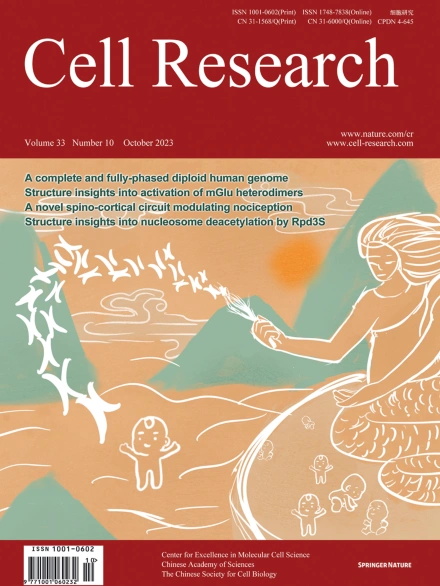
Advanced Search
Submit Manuscript
Advanced Search
Submit Manuscript
Volume 33, No 10, Oct 2023
ISSN: 1001-0602
EISSN: 1748-7838 2018
impact factor 17.848*
(Clarivate Analytics, 2019)
Volume 33 Issue 10, October 2023: 806-809 |
Structural insights into plant phytochrome A as a highly sensitized photoreceptor
Yuxuan Zhang1,2,† , Xiaoli Lin1,2,† , Chengying Ma3,4,† , Jun Zhao1,† , Xiaojin Shang1 , Zhengdong Wang1,2,3 , Bin Xu1 , Ning Gao3,4 , Xing Wang Deng1,2,3,* , Jizong Wang1,2,*
1National Key Laboratory of Wheat Improvement, Peking University Institute of Advanced Agricultural Sciences, Shandong Laboratory of Advanced Agriculture Sciences at Weifang, Weifang, Shandong, ChinaDear Editor,
Phytochromes (phys), first discovered in plants, are red and far-red photoreceptors that are also widely found in bacteria and fungi later.1,2 Plant phys utilize the linear tetrapyrrole chromophore called photochromobilin (PΦB). Phys reversibly toggle between the red light-absorbing Pr and the far-red light-absorbing Pfr conformers by photoconversion, with absorption peaks at ~667 nm and ~730 nm, respectively. The Pfr conformer can be converted to Pr in darkness, a process called dark reversion or thermoreversion.2,3 In plants, Pr conformers reside in the cytoplasm; and upon photoconversion, Pfr conformers are translocated into the nucleus, resulting in a plethora of physiological and developmental changes throughout the plant life cycle.
https://doi.org/10.1038/s41422-023-00858-4